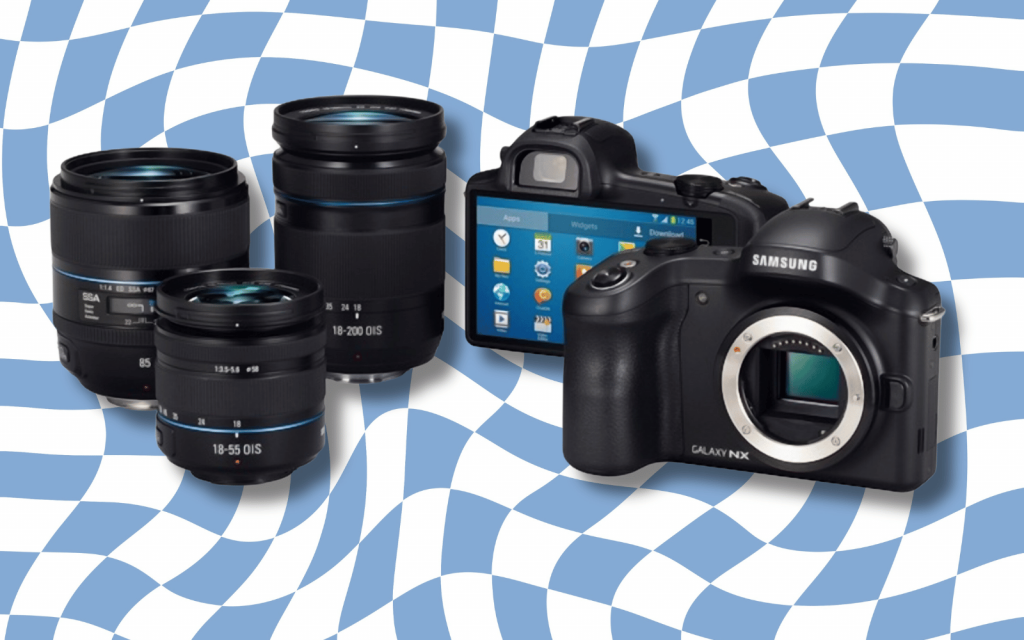That there is a camera. Why’s it special? It looks far too normal for this page.
To borrow a phrase, the Samsung Galaxy NX was ‘business in front, party in the back’. To the untrained eye, it looked like any other mid-range camera. You could mount lenses, prod a button to take a snap, and revel in the large (for the time) 20MP sensor. But spin the thing around and you were bathed in the glow of a 4.8in touchscreen. And that existed because this was the world’s first mirrorless interchangeable-lens camera to run Android. You know, the phone OS.
Android on a camera, in 2013! Bloody hell! Could you play Angry Birds on it, then?
Indeed. In fact, since the Galaxy NX had the clout of a pretty good Android tablet, it could go a lot further. You could even tackle a few tracks of Asphalt 8: Airborne, although you’d feel like a massive idiot while doing so… and would need to plug in headphones, as the piddly speaker only played system sounds. Add a SIM and you could make Skype calls too. But sensible types would use Android and wireless connectivity for on-device editing and flinging snaps to social networks and cloud storage, directly from the camera.
Sounds amazing. Or terrible. Or possibly both. It’s… going to be both, isn’t it?
You could write a pros and cons list as long as your arm for the Galaxy NX if you could find a big enough strip of paper. It was solid, with a great screen, and could capture good JPEGs. But RAW support was poor, and Android compromised the experience, making the unit slow. Pros reckoned it wasn’t camera-y enough; normal people had a heart attack on seeing the price: from R18,000, which back then could net you an Android smartphone and a quality digital camera. All in all, then, not the prettiest picture. It was gone by 2017.




